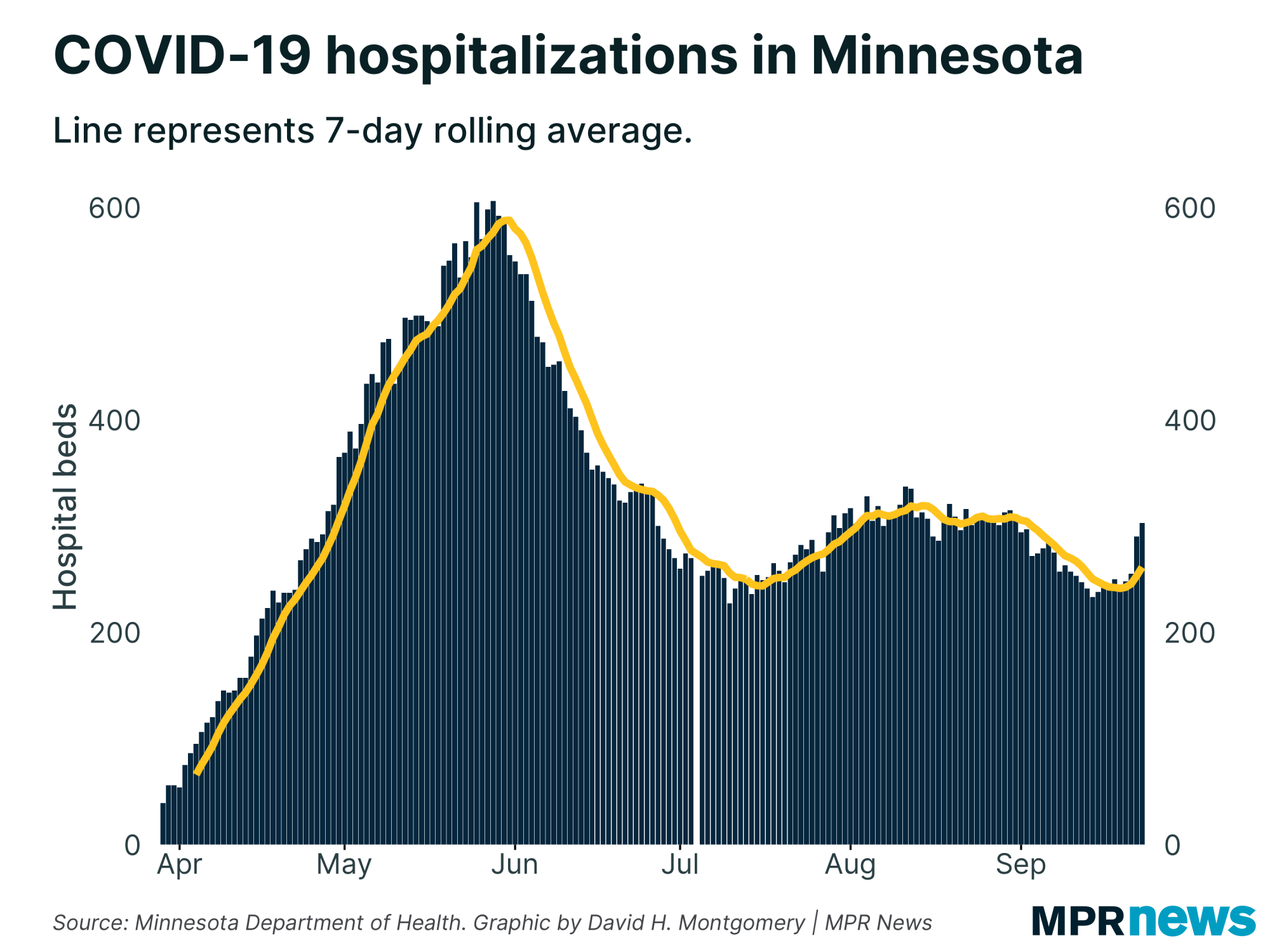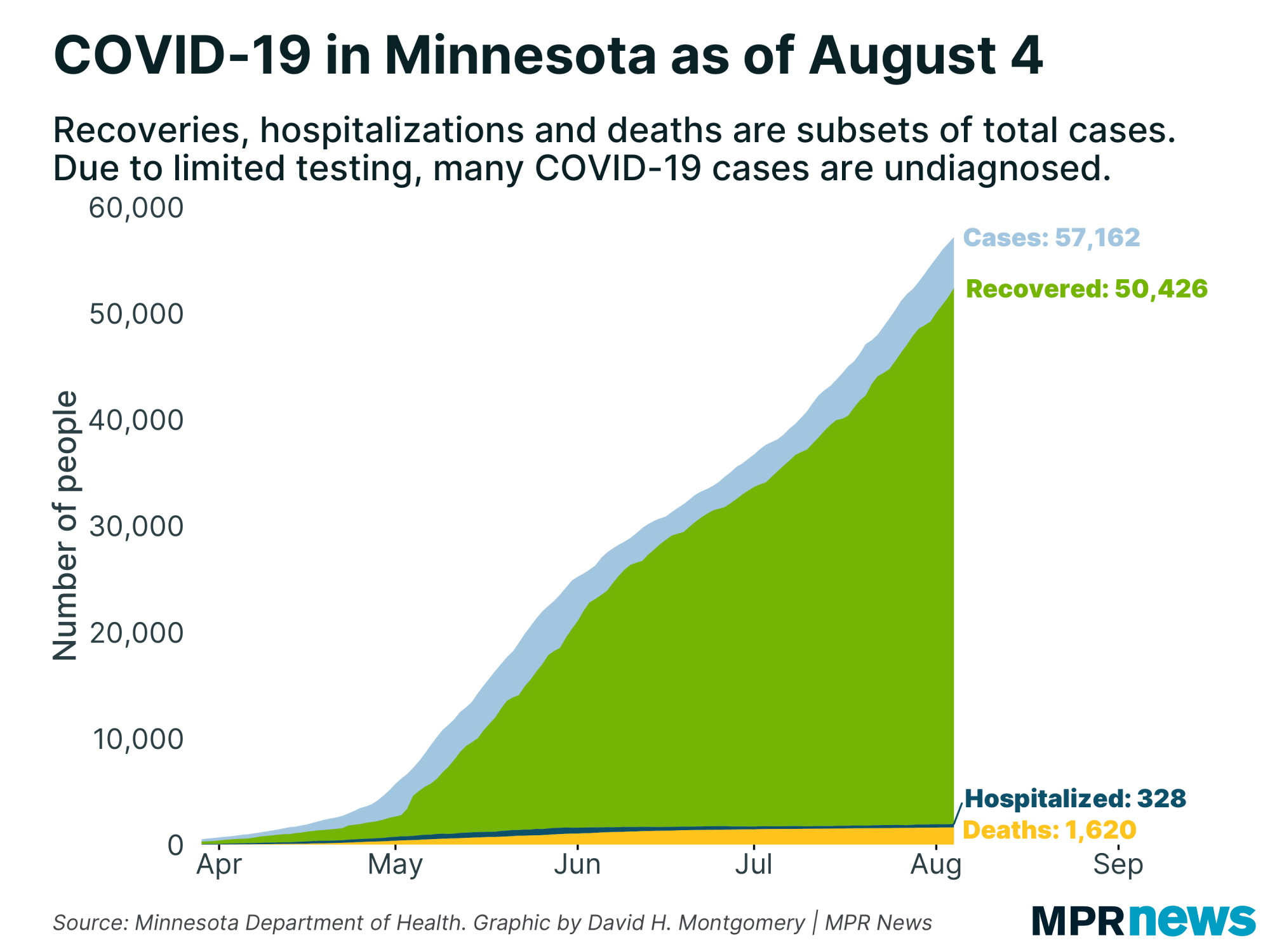Aug. 3 update on COVID-19 in MN: ICU cases up; Sturgis may be 'recipe' for spread

Go Deeper.
Create an account or log in to save stories.
Like this?
Thanks for liking this story! We have added it to a list of your favorite stories.
Updated: 3:44 p.m.
Bikers may see the upcoming Sturgis motorcycle rally in South Dakota as nine days of nonstop fun. Public health authorities, however, view it as a potential petri dish for the spread of COVID-19.
More than 250,000 riders and their friends from around the country are expected to arrive in the Black Hills staring Friday. That’s got Minnesota health leaders worried about the disease making its way back here.
“We are concerned with any large gathering, sustained contact of that nature,” Minnesota Health Commissioner Jan Malcolm told reporters Monday, calling the rally “sort of a recipe for something to happen.”
Asked if Minnesota might call for Sturgis riders coming back to the state to voluntarily quarantine, Malcolm said that while Sturgis-connected cases are expected to bubble up here in late August and early September, officials here haven’t yet discussed a quarantine request.
Turn Up Your Support
MPR News helps you turn down the noise and build shared understanding. Turn up your support for this public resource and keep trusted journalism accessible to all.
Riders who do go to Sturgis should limit their social activity when they return and “be very cautious” if their jobs or social interactions put them in contact with vulnerable people, added Kris Ehresmann, the state’s infectious disease director.
Hospitalizations headed the wrong way
Malcolm’s and Ehresmann’s remarks came hours after the Health Department released new data showing an ongoing mixed bag of encouraging and worrisome COVID-19 trends.
The Health Department Monday reported two more deaths from the disease, part of a line since late June of daily deaths in the single-digits. But new confirmed cases remain on the upswing, including 622 reported Monday.

While total current hospitalizations (302), were flat from Sunday, the count of those in the ICU (153) rose to a level not seen in five weeks.
Health Commissioner Jan Malcolm again implored Minnesotans to stay vigilant against the disease, noting that the state’s received some 370 complaints in the past few weeks tied to bars and restaurants over possible violations of the state’s mask-wearing and social distancing requirements, including 24 complaints on Friday.
Stopping the spread is “largely going to be determined by the decisions each of as Minnesotans make,” she told reporters.
Officials have been bracing Minnesotans to expect hospitalizations and ICU cases to grow in response to the surge in cases. While current hospitalizations are far lower than their late-May peak, they continue to go the wrong way.

Current hospitalizations have topped 300 for four days straight now, which hasn’t happened since the end of June.
Authorities remain worried that not enough Minnesotans are taking seriously the warnings to wear masks, wash hands and socially distance.
That was reinforced last week when a person who attended a crowded Minnesota rodeo last week was found to be contagious with COVID-19. Ehresmann on Monday said the department had not received any other reports of COVID-19 stemming from the rodeo.
Of the 56,560 confirmed cases of the disease since the pandemic began, about 88 percent of those infected have recovered to the point they no longer need to be isolated
Among the 1,616 Minnesotans who’ve died, about 76 percent had been living in long-term care or assisted living facilities.
Cases growing across age brackets, up north
Worries remain about the growth of coronavirus cases among younger Minnesotans, including that those infected will inadvertently spread the virus to grandparents and other more vulnerable people.
“Consider all the roles you play” in all daily interactions, Ehresmann cautioned last week. People who might not worry about themselves should worry about infecting vulnerable family members and coworkers, she added.

Minnesotans in their 20s now make up the age group with the most confirmed cases in the pandemic — more than 13,000. The median age of Minnesotans infected has been trending down in recent weeks and is now 36 years old.
Regionally, newly reported cases have been driven recently by the Twin Cities and its suburbs, but it’s present in all parts of the state, including the north, which had largely avoided the outbreak until recently.

Cases in Beltrami County, home to Bemidji, have more than doubled in the past two weeks, increasing to 193 as of Monday.

Meatpacking operations had been hot spots for big outbreaks in southwest, west-central and central Minnesota earlier in the pandemic, but new cases have slowed considerably in recent weeks.

The case increases the past few week in Minnesota have caught the attention of the nation’s top infectious disease expert, Dr. Anthony Fauci, who in a Monday interview with the Journal of the American Medical Association named Minnesota among a handful of states that should reconsider reimposing some restrictions given the trends.
While Minnesota’s daily new case increases in recent weeks have been high, they appear to have stabilized and that “gives us the sense we have a little bit more time to watch our trends,” Malcolm said.
State officials did caution again about waves of scams related to COVID-19 rolling through Minnesota, including a new twist — texts from people posing as Centers for Disease Control and Prevention experts trying to convince others to not wear masks and alleging a dry cough is a sign of “micro mold in your mask,” Ehresmann said.
She also warned again of scammers calling people pretending they are health investigators tracking a COVID-19 outbreak but then asking for Social Security or credit card numbers. A legitimate investigator will never ask for such information, she said.
Osterholm: Sturgis could kindle outbreaks around U.S.
Malcolm isn’t the only Minnesota health expert worried about a possible fallout from the Sturgis rally.
The length of the rally, from Friday through Aug. 16, will mean prolonged exposure for many, and the long-distance travel by many riders means they may carry the virus home and touch off other outbreaks, Michael Osterholm, head of the Center for Infectious Disease Research and Policy at the University of Minnesota, told MPR News earlier in the day Monday.
Sturgis will also feature some high-risk factors, including a surge of possibly hundreds of thousands of people — many of them older — packing into a relatively small town, he added.
“Come mid-August to late August, early September,” Osterholm said, “Sturgis will have one hell of an imprint on this country.”
Developments from around the state
Osterholm: Expect COVID-19 in junior, senior highs
Ahead of plans to bring at least some Minnesota students back into classrooms in a few weeks, disease experts say there will be COVID-19 outbreaks in schools.
Junior high and high school students will facilitate that spread, Michael Osterholm, head of the Center for Infectious Disease Research and Policy at the University of Minnesota, told MPR News Monday.
“We’re going to see it in high schools. This is why there’s a bifurcation in the recommendations about what to do to handle high school secondary students, versus younger students,” he said.
Off-campus gatherings continue to be a problem among college students, and older teens will have some of the same challenges, he added.
Osterholm saw some hopeful signs in the outbreak. Day care centers, he noted, have been able to keep operating with minimal disruption, and research is showing kids under 10 years old aren’t major factors in coronavirus transmission.
— Tim Nelson | MPR News
Groups urge Congress to include funding for telemental health in next COVID-19 aid
Leaders in the field of mental health and addiction services in Minnesota are calling on Congress to award $100 million to help meet the nation's growing need during the COVID-19 pandemic.
The bill would provide grants to Native American tribes, qualified nonprofits and other providers who have been largely left out of past federal coronavirus response aid.
The money would help with telephone helplines and websites and telehealth services, which Hazelden Betty Ford Foundation president and CEO Mark Mishek says are working.
"The early data is continuous sobriety is equal to if not a little better than what we saw for in-person out-patient services, so, so far so good,” Mishek said. “Now, some people aren't going to thrive well in virtual services but it appears it is a very effective mode of treatment."
Democratic U.S. Sen. Amy Klobuchar, of Minnesota, and a Republican Senator from Indiana introduced the legislation in May, with hopes it will be part of whatever Congress passes to follow the expired CARES Act.
— Nina Moini | MPR News
Top headlines
End of federal $600 unemployment benefit leaves Minnesotans anxious: Tens of thousands of Minnesotans who have lost their jobs due to the coronavirus pandemic have relied on an extra $600 weekly unemployment payment from the federal government to make ends meet. But that extra cash benefit has expired.
For Minnesotans, Walz’s school plan brings more questions than answers: With little more than guidance from the state government for how to handle the upcoming school year, many Minnesotans remain in limbo for how their lives will look in a month.
COVID-19 in Minnesota
Data in these graphs are based off Minnesota Department of Health cumulative totals released at 11 a.m. daily. You can find more detailed statistics on COVID-19 at the Health Department website.
The coronavirus is transmitted through respiratory droplets, coughs and sneezes, similar to the way the flu can spread.


